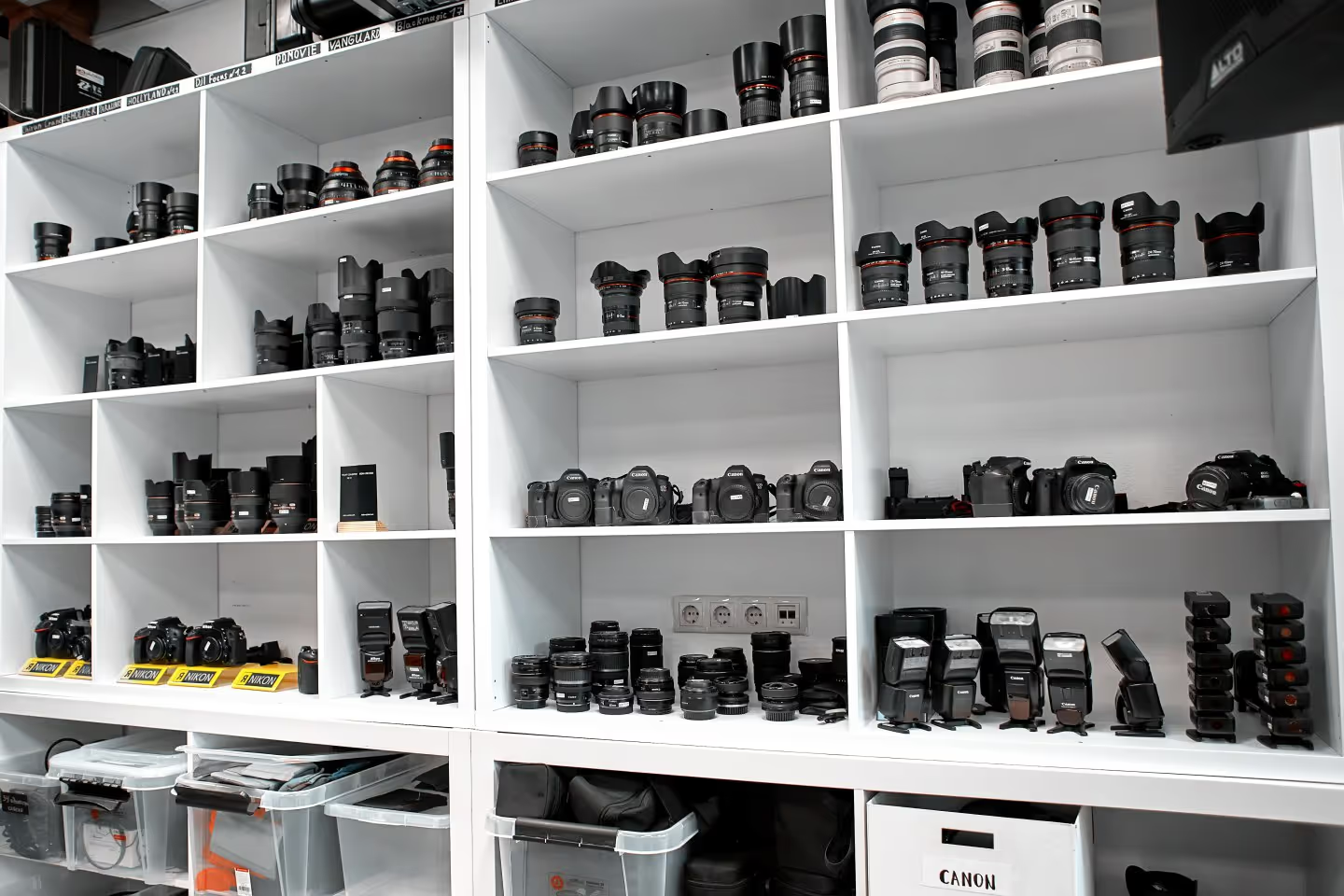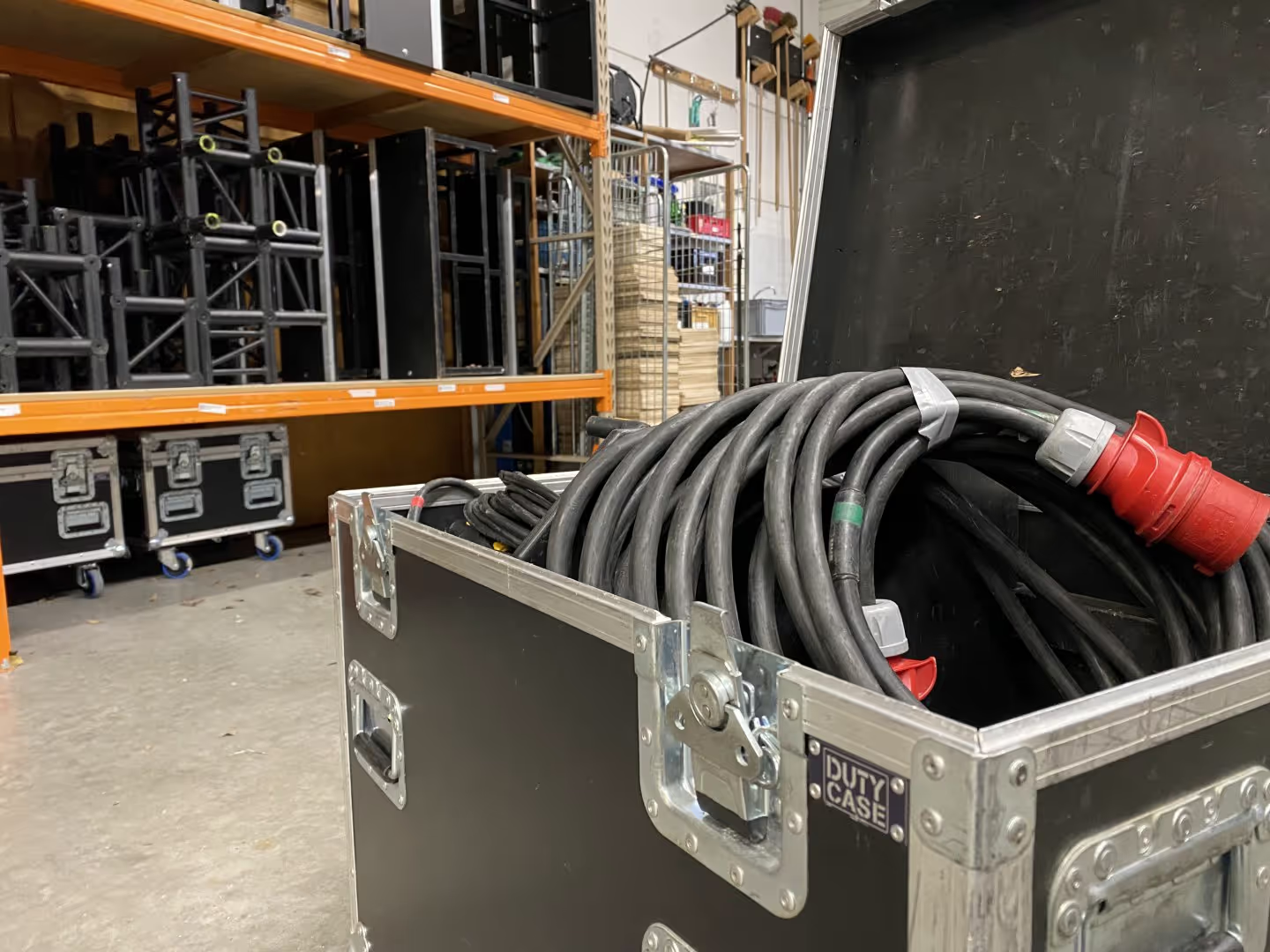How Inventory Management Software for Small Businesses Transforms AV, Event, and Media Production Operations

From cameras and lighting to sound equipment and props, having the right tools to track and manage inventory can streamline business operations, reduce costs, and improve efficiency.
Inventory management platforms for small businesses—particularly solutions like Rentman—offer a powerful way to oversee everything from stock levels and orders to asset tracking and project logistics.
In this article, we'll explore how using inventory management software can revolutionize the way small businesses manage inventory, optimize workflows, and enhance operational performance in the AV, event, and media production industries.
What Is Inventory Management?
Inventory management refers to the process of overseeing and controlling stock levels, purchase orders, and inventory data to ensure that a business runs smoothly. For small businesses in AV and media production, effective inventory management ensures that essential equipment, materials, and supplies are always available when needed.
Why Inventory Control Matters in AV, Event, and Media Production
Effective inventory management goes beyond simply tracking equipment. The stakes are high, and managing resources efficiently is crucial for maintaining smooth operations:
- Optimized Equipment Usage: Ensuring that AV and production equipment is in the right place at the right time helps prevent disruptions and delays. An inventory management system ensures that critical equipment like cameras, lighting, microphones, and props are available when you need them, minimizing downtime.
- Cost Savings: Proper inventory tracking helps businesses avoid over-purchasing or over-renting, allowing for smarter investment decisions. By streamlining operations and maintaining optimal stock levels, companies can better manage inventory costs and improve cash flow.
- Enhanced Project Planning: Inventory management solutions like Rentman make it easier to plan and allocate equipment across multiple projects or events. Real-time visibility into inventory data allows you to manage inventory items across locations, ensuring you’re always prepared.
Why Choose to Use an Inventory Management Software
Inventory management software is a digital tool designed to help businesses track, manage, and optimize their inventory. Key features include:
- Barcode, QR code, or RFID tag scanning for easy tracking of equipment
- Inventory tracking across multiple warehouses or locations
- Purchase orders and automated stock replenishment to ensure stock levels are maintained
- Reporting capabilities to make data-driven decisions on equipment usage, maintenance schedules, and inventory needs
In the AV, event, and media production industries, the best inventory software solutions offer various features that help businesses monitor equipment, supplies, and resources needed for each project, including:
1. Real-Time Visibility & Inventory Tracking
The most valuable feature of inventory management systems is real-time visibility. This allows you to track your inventory items across multiple locations and even through different stages of the project, including:
- Warehouse management: Easily see where each item is stored, whether in the warehouse or on a job site.
- Track inventory: View item availability in real-time, ensuring you’re prepared for events or media shoots without last-minute scrambles.
- Multi-location management: For businesses managing multiple warehouses or storage locations, these tools can sync your inventory, offering a consolidated view of stock across different places.
2. Streamlined Operations with Barcode Scanners
Barcode scanning is one of the key features of inventory management software. Businesses can ensure accurate stock counts by scanning each piece of equipment when it’s checked in or out.
Barcode scanners are integrated with most inventory management solutions, allowing easy updates and inventory transfer between locations. This simplifies the process of managing stock transfers, reducing human error and increasing operational efficiency. Some platforms, like Rentman, also use QR codes and RFID tags for tracking.
3. Improved Cash Flow
An inventory management system optimizes stock levels, ensuring that businesses don’t overinvest in inventory or face costly shortages. Inventory management software solutions also offer powerful order management and reporting capabilities. These features allow small businesses to:
- Manage purchase orders and automate stock replenishment based on predefined thresholds.
- Generate detailed reports that give insights into inventory data, equipment usage, and stock levels, empowering businesses to make informed decisions based on actual usage and demand trends.
With features like quantity-based alerts, businesses can manage their stock levels proactively, avoiding stockouts or over-purchasing.
4. Integration with Other Systems
Many inventory management software solutions integrate seamlessly with accounting software, sales channels, and shipping management systems, creating a unified workflow.
Platforms like Rentman are designed to support the complex nature of these industries. They provide real-time visibility into inventory levels and make it easier to manage inventory processes and supply chains efficiently.
Key Features of the Best Inventory Management Software
Inventory Tracking
Effective software tracks inventory items across multiple warehouses, ensuring accurate stock levels and easy stock transfers.
Barcode Scanning
Using barcode scanners streamlines inventory processes, enabling quick and accurate data entry for inventory levels and sales.
Purchase Orders
A robust inventory system simplifies the creation and tracking of purchase orders, ensuring timely restocking and vendor management.
Detailed Reports
Reporting capabilities provide insights into inventory data, helping businesses analyze trends and make data-driven decisions.
Mobile Access
Mobile apps allow business owners and managers to monitor inventory levels and manage operations on the go.
Multi-Warehouse Management
For businesses with more than one warehouse, the ability to manage inventory across locations ensures smooth operations.
How Inventory Management Software Benefits AV, Event, and Media Production Businesses
Enhanced Equipment Tracking
In AV and media production, keeping track of expensive equipment is critical. Inventory software provides asset tracking capabilities, ensuring that equipment is accounted for and ready for use.
Efficient Order Management
With order management features, businesses can handle customer orders, sales channels, and shipping integrations efficiently. This is particularly beneficial for event production companies dealing with tight schedules.
Reduced Inventory Costs
By optimizing stock levels and tracking inventory processes, inventory management software helps reduce costs associated with overstocking or understocking.
Better Warehouse Management
For companies managing warehouses filled with AV equipment or event supplies, an inventory management system streamlines operations and improves stock visibility.
Choosing the Best Inventory Management Software for Small Businesses
When selecting inventory management software, consider the following factors:
1. Scalability
Choose a solution that can grow with your business, offering features like multi-warehouse management and integrations with other apps.
2. User-Friendly Interface
A simple and intuitive interface ensures the crew can easily adopt the software, minimizing training time.
3. Integration Capabilities
Look for inventory software that integrates with accounting software, point-of-sale systems, and shipping management tools to streamline business processes.
4. Cost-Effectiveness
Evaluate inventory management software costs to ensure the solution fits your budget while providing the necessary features.
5. Free Trials
Take advantage of free trials to test the software’s functionality and determine if it meets your needs. Solutions like Rentman, a complete event and production planning platform, offer flexible inventory management solutions that can grow with your business. Free trials allow you to test out key features like inventory tracking, order management, and reporting capabilities before committing.
Implementing an Inventory Management System
Step 1: Assess Your Needs
Determine your business’s inventory management challenges and identify key features that will address them. When selecting inventory management software for your small business, it's important to assess your specific requirements. Consider the following:
- Size of your business: Are you managing inventory for a small local business or a growing enterprise?
- Number of warehouses: Do you need multi-warehouse management?
- Sales channels: Do you sell online or only manage rentals?
- Additional features: Do you need features like barcode scanning, mobile apps, or shipping integrations?
Step 2: Select the Right Software
Choose inventory software that aligns with your operational goals and budget. Consider scalability, integration capabilities, and user licenses.
Step 3: Train Your Team
Ensure all users understand how to navigate the system and leverage its features effectively.
Step 4: Monitor and Optimize
Review inventory data and reporting capabilities regularly to refine your processes and make data-driven decisions.
Overcoming Challenges in Inventory Management
1. Managing Multiple Warehouses
Multi-warehouse management features help businesses track inventory across locations, ensuring accurate stock levels.
2. Integrating with Sales Channels
Seamless integrations with online marketplaces and other sales platforms simplify order management and reduce errors.
3. Real-Time Updates
Real-time visibility into inventory levels ensures that businesses can react quickly to changes in demand or supply chain disruptions.
4. Tracking Inventory Costs
Detailed reports and data analysis tools help businesses monitor inventory costs and identify opportunities for savings.
The Future of Inventory Management for Small Businesses
As technology continues to advance, inventory management systems are becoming more sophisticated. Here’s what the future holds:
- AI and Machine Learning: Predictive analytics will help businesses forecast demand and optimize stock levels.
- IoT Integration: Smart devices and sensors will update inventory items and warehouse conditions in real time.
- Enhanced Mobility: Mobile apps will become even more powerful, offering advanced features like augmented reality for inventory tracking.
Conclusion
For small businesses in the AV, event, and media production industries, inventory management software is essential for ensuring efficient operations and reducing costly errors. Solutions like Rentman provide specialized features for managing equipment, tracking inventory levels, and streamlining logistics, all while integrating seamlessly with accounting software and other business tools.
By adopting an inventory management system tailored to your needs, your business can optimize workflows, reduce costs, and improve customer satisfaction, positioning you for long-term success. Discover how Rentman can transform your inventory management and get your small business on track today.
FAQ
Frequently asked questions
No items found.
Previous blog posts

Mastering Inventory Management Strategies for the AV, Events, and Media Production Industries: A Comprehensive Guide
Mastering Inventory Management Strategies for the AV, Events, and Media Production Industries: A Comprehensive Guide

The Ultimate Guide to Creating a Winning Quote Template for Your AV, Events, and Media Production Business
The Ultimate Guide to Creating a Winning Quote Template for Your AV, Events, and Media Production Business

